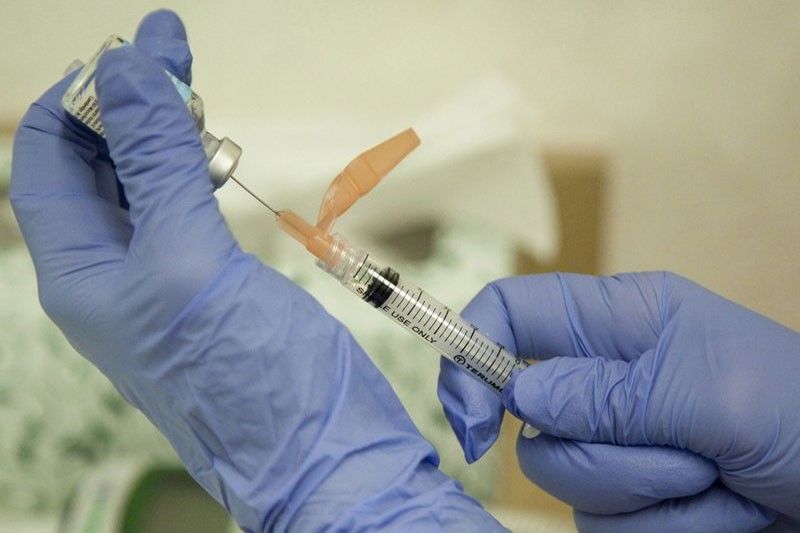WHO fears flu pandemic; Philippine vaccine shortage feared

MANILA, Philippines — As the World Health Organization (WHO) warned of the possibility of “another influenza pandemic” within the year, an expert has revealed a shortage of flu vaccines in the Philippines.
“Vaccine is still the best strategy against vaccine-preventable disease. But now that there is a shortage of flu vaccine, we should focus on treatment to curb the rising cases of influenza,” former Philippine Society for Microbiology and Infectious Diseases president Rontgene Solante noted at a media forum last week.
Solante said the Philippines may not have enough vaccines to protect people from influenza because of the long-standing practice of the pharmaceutical industry worldwide to allocate supplies.
Flu vaccination, Solante said, starts in April for the rainy season from June to October, which is the peak season for influenza infection.
Solante claimed that the country has a “lag time” of two months before it can receive the vaccines needed for this quarter when doctors see a rising number of people consulting physicians.
“What we can do now is to focus on treatment… We can also use the vaccines left from last year, if there are any,” he said.
The expert also underscored the need to scale up information about good hygiene and sanitation, especially in crowded communities where the influenza virus can easily spread.
Ten years after the widespread novel influenza A (H1N1) infection, the WHO warned that the world could face another influenza pandemic.
“The only thing we don’t know is when it will hit and how severe it will be. Global defenses are only as effective as the weakest link in any country’s health emergency preparedness and response system,” WHO noted in a report yesterday.
WHO added that 153 institutions in 114 countries are involved in the global surveillance and response.
In June 2009, the WHO declared a pandemic of H1N1 virus after it was first detected in the US and spread quickly across the world. The virus was found to contain a unique combination of influenza genes not previously seen in people or animals.
WHO’s website shows that the virus is transmitted primarily through droplets disseminated by unprotected cough and sneeze and contact with contaminated hands. Shot-distance airborne transmission may happen particularly in crowded and enclosed spaces, WHO also noted.
Every year, WHO recommends which strains should be included in flu vaccines.
In the event that a new flu strain develops into pandemic potential, WHO has set up a unique partnership with all the major players to ensure the effective and equitable access to diagnostics, vaccines and antiviral-treatments, especially in developing countries.
Other threats
WHO added that aside from influenza pandemic, the world is facing nine other “multiple health challenges” that will “demand attention from WHO and health partners.”
These threats include air pollution and climate change; rising non-communicable diseases; existence of fragile and vulnerable settings; anti-microbial resistance; ebola and high-threat pathogens; weak primary health care; vaccine hesitancy; dengue and HIV.
This year, the agency said, air pollution is considered as the “greatest environmental risk to health,” affecting nine of 10 people.
“Microscopic pollutants in the air can penetrate respiratory and circulatory systems, damaging the lungs, heart and brain, killing seven million people prematurely every year from diseases such as cancer, stroke, heart and lung disease,” WHO claimed.
WHO added that the primary cause of air pollution – burning fossil fuels – is also a major contributor to climate change, which impacts people’s health in different ways.
Between 2030 and 2050, WHO estimates that climate change is expected to cause 250,000 additional deaths per year, from malnutrition, malaria, diarrhea and heat stress.
The agency also expressed concern over the rising cases of non-communicable diseases such as diabetes, cancer and heart disease, which are collectively responsible for over 70 percent of all deaths worldwide, or 41 million people, including 15 million people dying prematurely, aged between 30 and 69.
The rise of these diseases has been driven by five major risk factors: tobacco use, physical inactivity, harmful use of alcohol, unhealthy diets and air pollution.
WHO said the presence of “fragile and vulnerable settings” in almost all regions of the world is seen as a risk.
The report showed that more than 1.6 billion people, or 22 percent of the global population, live in places where protracted crises – through a combination of challenges such as drought, famine, conflict and population displacement – and weak health services leave them without access to basic care.
According to WHO, the development of antibiotics, antivirals and antimalarials are some of “modern medicine’s greatest successes.”
“Now time with these drugs is running out. Antimicrobial resistance – the ability of bacteria, parasites, viruses and fungi to resist these medicines – threatens to send us back to a time when we were unable to easily treat infections such as pneumonia, tuberculosis, gonorrhea and salmonellosis,” WHO added.
The agency warned that the inability to prevent infections could seriously compromise surgery and procedures such as chemotherapy.
Drug resistance is driven by the overuse of antimicrobials not only in people but also animals, especially those used for food production as well as in the environment.
WHO also reported that the challenges posed by Ebola and other high-threat pathogens are real. In 2018, the Democratic Republic of Congo saw two separate Ebola outbreaks, which spread to cities of more than one million people.
WHO said primary health care is “usually the first point of contact people have with their health care system and ideally should provide comprehensive, affordable, community-based care throughout life.”
But there are countries whose primary health care cannot meet majority of the people’s health needs, WHO said.
WHO is also concerned with “vaccine hesitancy” or the people’s reluctance or refusal to vaccinate despite the availability of vaccines. This threatens to reverse progress made in tackling vaccine-preventable diseases, it said.
“One of the most cost-effective ways of avoiding disease, it currently prevents two to three million deaths a year and a further (million and a half) could be avoided if global coverage of vaccinations improved,” WHO added.
- Latest
- Trending
































